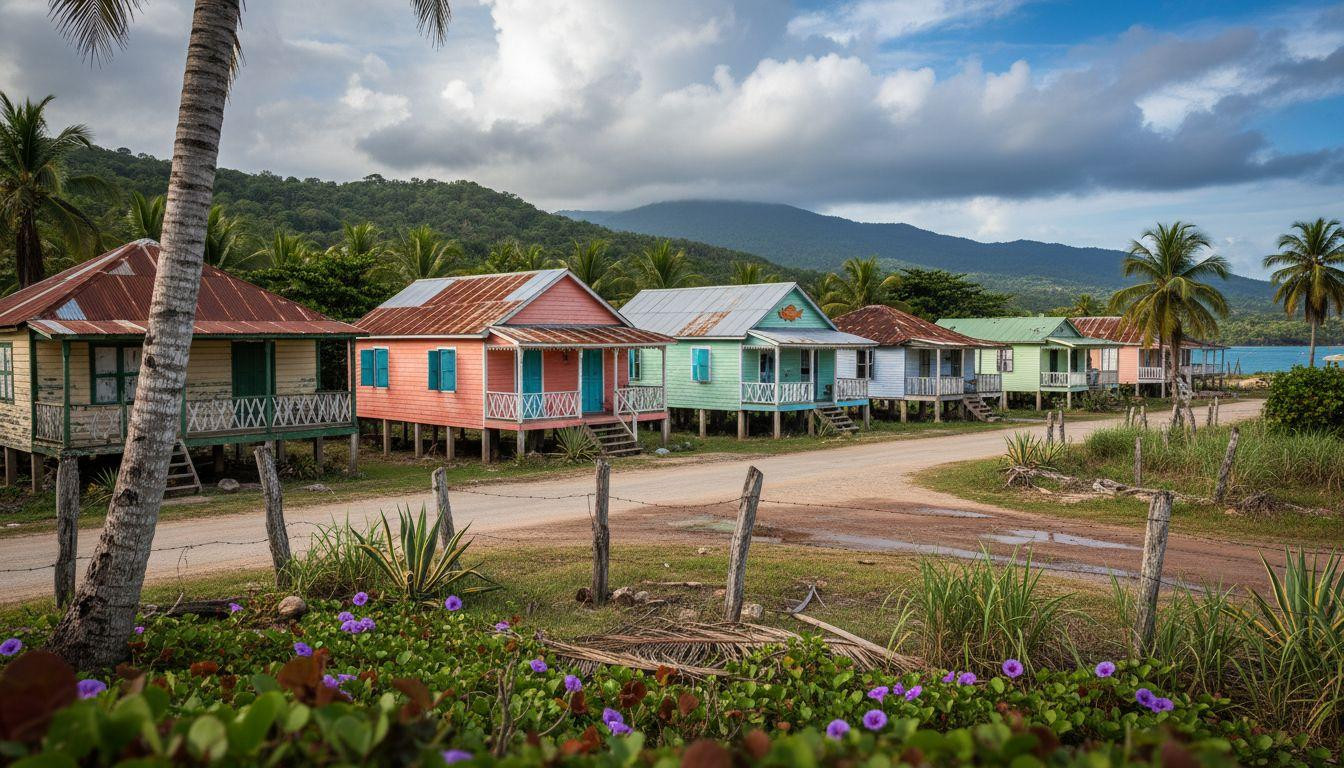The 15-minute flight from San Andrés descends toward turquoise waters so brilliant they seem artificial. Below, colorful wooden houses cascade down green hillsides to meet impossibly blue Caribbean sea. This is Isla de Providencia, Colombia’s overlooked treasure where 2,500 residents preserve authentic creole culture while San Andrés buckles under 3 million annual tourists. The contrast becomes clear as you step onto this 17-square-kilometer sanctuary. No cruise ship crowds, no resort sprawl, no duty-free shopping chaos. Just the gentle rhythm of island life that San Andrés abandoned decades ago.
Why San Andrés became a tourist factory
San Andrés transformed from Caribbean gem to overcrowded destination following a predictable pattern. Three million visitors annually overwhelm infrastructure designed for thousands, not masses. The required tourism card costs $35-40 USD, granting access to beaches where vendors outnumber available sand patches.
International hotel chains replaced family-run guesthouses, pushing accommodation rates to $150-300 nightly during December-January peak season. The airport receives constant flight arrivals from Bogotá, Miami, and regional hubs. Daily waves of tourists create persistent crowds that drain the island’s intimate character.
Resort amenities exist, duty-free shopping thrives, established tour operations function efficiently. But finding authentic Caribbean culture beneath the tourism infrastructure requires effort most package-tour visitors lack. The Greek island of Ios faces similar challenges balancing authenticity against tourist reputation.
Meet Providencia: authentic Caribbean 15 minutes away
Geography that enforces authenticity
One main road circumnavigates Providencia, accessible by car, mule, or foot. No traffic congestion, no development sprawl, no urban chaos. The 15-minute flight from San Andrés remains the exclusive access method. No ferries operate, no cruise ships dock, no day-tripper invasions occur.
Colorful wooden creole houses with gabled roofs and wraparound porches line village streets. Traditional architecture painted in pastels and bright primary colors creates Instagram-worthy scenes without Instagram crowds. The famous Puente de los Enamorados (a vibrant wooden footbridge) connects Providencia to tiny Santa Catalina island, where Morgan’s Head cliff formation offers panoramic ocean views.
The price reality that saves money
San Andrés budget accommodations start at $80-120 nightly. Providencia’s locally-owned posadas cost $37-84 per night during low season (September-November). Mid-range doubles running $150-250 in San Andrés cost $90-140 here. The Maldives archipelago demonstrates similar cost advantages over famous tropical destinations.
Seafood meals reflecting authentic Caribbean preparations cost 30-50% less than resort restaurants. No luxury hotel chains means no luxury pricing. Family-run establishments maintain reasonable Caribbean rates while preserving community character.
What you’ll actually experience on Providencia
Marine encounters without resort operators
Boat excursions to Cayo Cangrejo (a 2-hectare islet) operate through local guides rather than resort concierges. Snorkeling and diving services reflect small-scale infrastructure requiring direct coordination with island operators. Southwest Beach, accessible via 45-minute walk along the main road, rewards effort with coral reef views visible from shore.
The marine environment remains pristine precisely because mass tourism never arrived. Australia’s Coral Bay shares similar marine sanctuary characteristics with comparable small-scale tourism infrastructure.
Living creole culture, not performance tourism
English creole speech (Caribbean creole derived from English with West African influences) serves as primary language alongside Spanish. This represents daily life continuing for centuries, not heritage tourism performance. Reggae music permeates social spaces naturally, not as resort entertainment programming.
Local restaurants serve fresh fish, lobster, and crab with coconut, plantains, and tropical fruit preparations. Authentic Caribbean culinary traditions persist rather than fusion cuisine designed for tourist palates. The island’s consistently cited “unhurried quality” represents genuine community rhythm, not manufactured “island time” marketing.
Hurricane Iota recovery demonstrates resilience
Hurricane Iota devastated Providencia in November 2020, destroying significant infrastructure. By March 2023, recovery efforts had fully restored tourism capabilities. The 2025 UNESCO “Best Tourism Villages” nomination recognizes this resilience and commitment to regenerative tourism models.
Recent visitor surveys consistently describe the island as enabling travelers to “disconnect from world noise while connecting with nature.” This recovery narrative distinguishes Providencia from destinations with static identities. Rarotonga’s comparison to Bora Bora reinforces similar authentic alternative frameworks.
The community actively engages in sustainable tourism development rather than passive reception of visitor flows. Local ownership maintains cultural authenticity while economic benefits support resident families directly.
Your questions about Isla de Providencia answered
What’s the best time to visit Providencia?
January-June offers reduced rainfall and stable weather conditions, representing the optimal visiting window. December-January sees peak tourist numbers with premium pricing but excellent weather. November-December brings rainy season with lowest prices and significantly fewer tourists. Current mid-November 2025 timing places us in rainy season transition, making December 2025-January 2026 the immediate optimal window.
How do you get from San Andrés to Providencia?
Commercial flights operate the 15-minute journey between islands as the exclusive transportation method. Most international travelers arrive in San Andrés via Bogotá or Miami connections, then continue to Providencia. Total journey from Colombian mainland requires 4-8 hours depending on connection efficiency. The 146,000 COP tourism card ($35-40 USD) covers the entire archipelago.
How does Providencia compare to other Caribbean destinations?
Providencia resembles small islands like the Grenadines in scale and underdeveloped infrastructure while remaining more accessible and affordable than established resort destinations. English creole culture creates similarities to Jamaica or Dominica on a much smaller scale. The combination of Colombian air access, reasonable pricing, and minimal overdevelopment positions it between complete remoteness and established tourism infrastructure.
Your San Andrés connection touches down, disgorging hundreds into resort transfer buses. From the same airport, your continuation flight lifts over turquoise water toward mountains most passengers never see. Fifteen minutes later, Providencia’s colorful houses emerge through tropical light. Same Colombian archipelago, different century, different values entirely.
